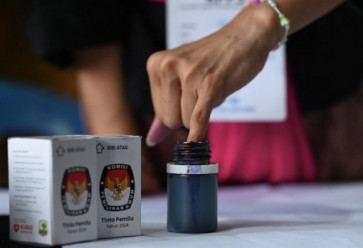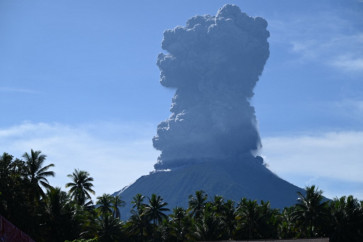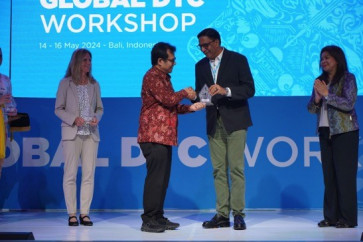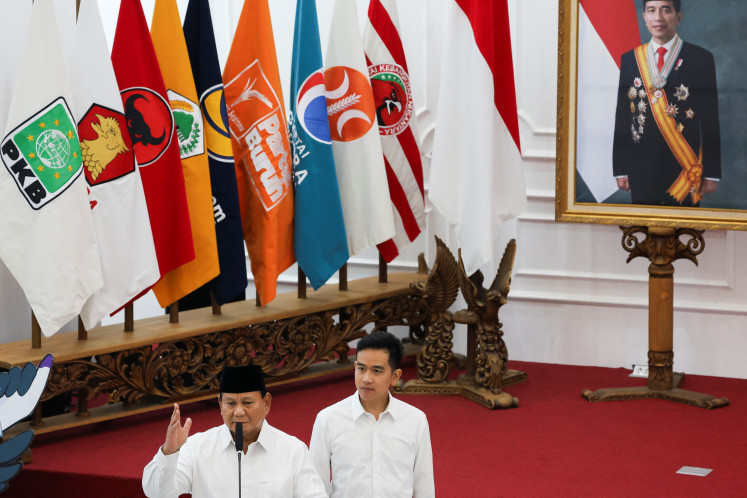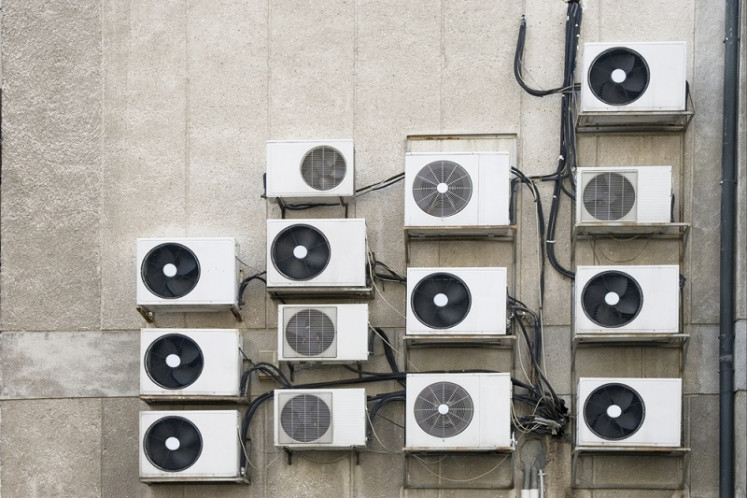Wakatobi Islands: Underwater nirvana like no other
The clear and clean seawater that surrounds the Wakatobi Islands holds the highest number of reef and fish species in the world.
Change Size
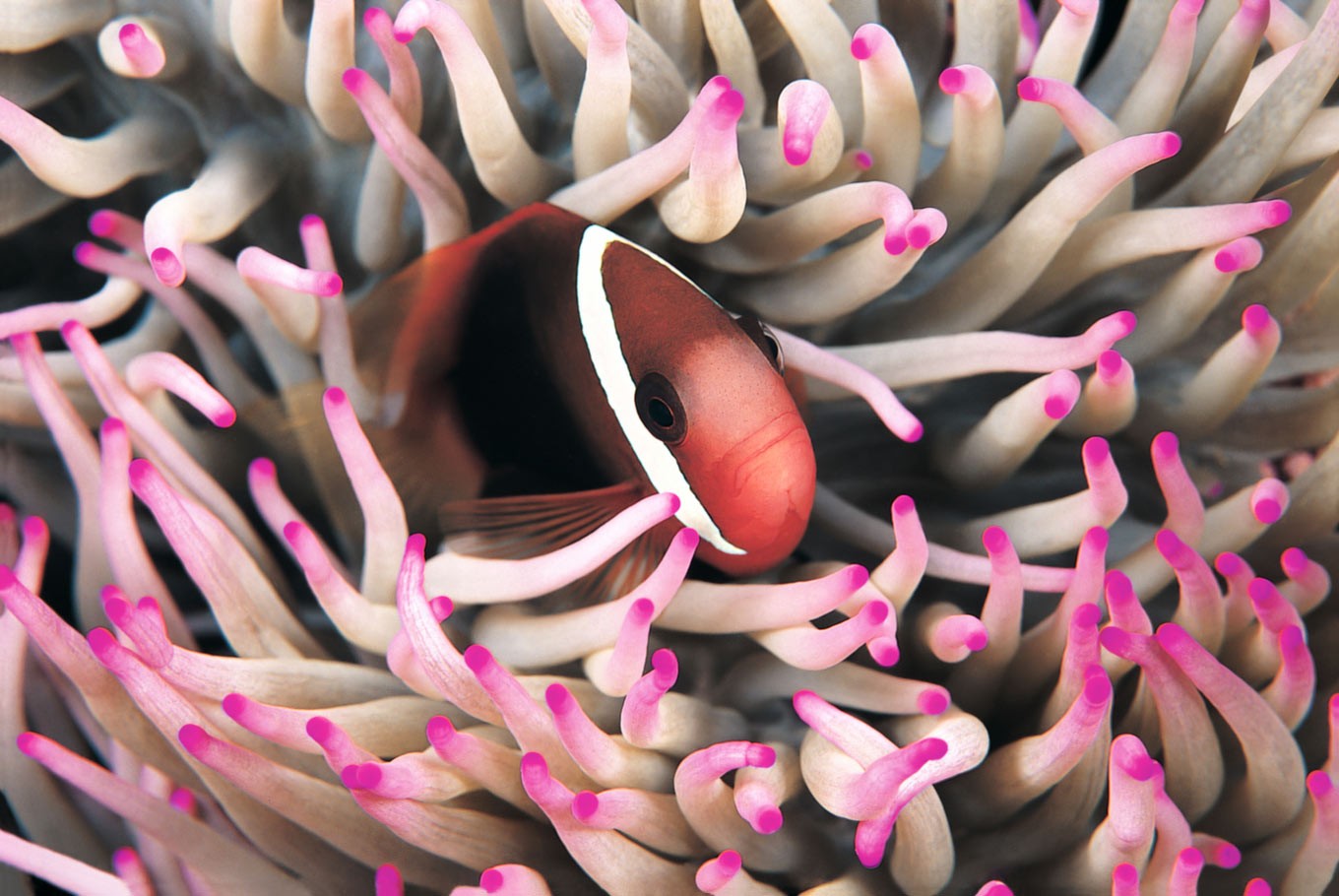 Fire clownfish hiding in anemones at Wakatobi. (Shutterstock/File)
Fire clownfish hiding in anemones at Wakatobi. (Shutterstock/File)
I
ndonesia is a country where acronyms abound, so when I was informed I was traveling with a group of friends to Wakatobi, I assumed it was just to one island by that name.
It was only later that it dawned on me that Wakatobi was also an acronym.
Wakatobi is an abbreviation of the collective names for a string of islands that lie southeast of Sulawesi, which are Wangi Wangi Island, Kaledupa Island, Tomia Island and Binongko Island. It is also referred to as the Tukang Besi Islands.
Sulawesi itself forms part of the archipelago of Indonesia. It lies toward its eastern fringes and is said to be shaped like an orchid.
Sulawesi holds within it endemic flora and fauna that are unique and different from the rest of Indonesia. The seas surrounding it also abound in unique and beautiful sea life and colorful coral. These characteristics are also reflected around the Wakatobi Islands.
Wakatobi is a marine national park. It forms a barrier reef second only to Australia’s Great Barrier Reef. The clear and clean seawater that surrounds the islands hold the highest number of reef and fish species in the world. The islands are also home to diverse habitat of wetlands, mangroves and forests.
Going to Wakatobi means island hopping is a must, although it requires depending on ferry services that are not always reliable and on the vagaries of weather and ocean currents.
For us the first stop was Jakarta, the capital of Indonesia. From there we took a flight to Kendari, a city on the mainland of Sulawesi. From Kendari onwards it was a case of traveling through a series of places with beautiful and exotic names.
From Kendari we flew to the first island, Wangi-Wangi, which literally translates into "nice smell-nice smell". Here we stayed at the Patuno Bay resort; a large hotel straddling the beach and the Flores Sea. The resort itself had become run down since we last visited it, but it was still OK for just two nights.
As a bird enthusiast and photographer, I was thrilled to see many wading birds like golden plover, beach thick-knee, grey-tailed tattler, Eurasian whimbrel and the great-billed heron. The tall trees around the resort were home to the colorful black-naped fruit dove, bright yellow black-naped oriole, island monarch, white-breasted wood swallow, Sulawesi triller and the tiny and colorful grey-sided flowerpecker.
Read also: Garuda Indonesia opens direct flight to reach Wakatobi from Ambon
From Patuno Bay resort we took a boat to Kambode Island. Here a full day was spent snorkeling, diving and bird watching.
Wakatobi is blessed with beautifully colored live coral that is in good condition. It’s a barrier reef, with varied soft corals, hard corals and fan corals on walls. The clear, clean waters shelter a variety of marine life, some being rare and unusual, like the pygmy sea horse, pygmy pipe horse, skeleton shrimp, frogfish and the endearing clownfish, as well as a variety of nudibranches. As it’s a protected site fish tend to be large and plentiful like schools of big-eye trevelley, black-tipped sharks, bump-head parrotfish and barracuda. To be seen are also the Napolean wrass and the green and hawksbill turtles.
The next day we rented cars and motorbikes and went around the island visiting a Bajo or Sea Gypsy village, a seaweed farm, a traditional cloth weaving place and a colonial fort -- all the while taking in the scenic views of the island.
Next stop was Hoga Island, which is adjacent to Kaledupa Island: the KA of Wakatobi. Again, we had a boat ride on a clear blue sea.
Along the way, the bird watchers were thrilled to see various sea birds, notably the red-footed booby, the brown booby and several terns. Occasionally dolphins would emerge and frolic along the boat. From Hoga Island, we did more snorkeling, diving or just enjoying the nature and fresh sea breeze.
Also included was a visit to another Bajo village in Kaledupa. This was a very marginalized and poor community. The amenities in the villages were basic, but the people were friendly and welcoming.
The sea gypsy community are an ancient nomadic people, whose main livelihood has been fishing using traditional methods and plying small wooden boats. They live in far-flung islands in Indonesia and other surrounding countries. In the 21st century they still rely on fishing but live in permanent settlements, where houses are built on wooden stilts in the sea. It must be noted that the way of life of this ancient people is under threat. The younger generations prefer to leave the villages, seeking better lives, while in the long run, their parents cannot compete with commercial fishing that is creeping into the area.
The crowning part of Kaledupa was a visit to Lake Sembano where the adventurous could swim among hundreds of little red shrimps that live in the lake. A little sea snake was sighted in here too.
After two days on Hoga Island, we needed to get to Tomea Island, which forms the To of Wakatobi. The ferry from here was unreliable so we had to charter a private boat. Getting into the boat with our bags and baggage from the jetty was a hairy experience. As the jetty lacked a functional stairway, a makeshift ladder was connected to the boat and some of us literally went on our bottoms into it.
After a few hours' ride on a choppy sea, we arrived at Tomea. This island too was surrounded by spectacular coral reefs and marine life, as well as beautiful birds both at sea and on land.
As bird watchers, we were charmed by the beady-eyed lemon-bellied white-eye and the bright red-breasted grey-sided flowerpecker, which has been recently classified as endemic to Wakatobi.
On all the islands we were surrounded by the bluest of blue seas and saw spectacular sunrises and sunsets.
From Tomea Island we made our way back by ferry to Wangi-Wangi and then by air to our respective countries and places.
Binongko Island forms the Bi of Wakatobi but we kept that one for another visit.
Wakatobi requires a lot of traveling often under basic conditions, but to quote Jacques Cousteau, it is an "underwater nirvana" and for me above the water too. (kes)
***
Valli-Kanapathipillai de Vries is a writer and photographer of wildlife and landscapes. She lived in Indonesia for many years and is now based in Bangladesh where she contributes travelogues to the Daily Star newspaper. Contact her at info@vallidevries.com.

